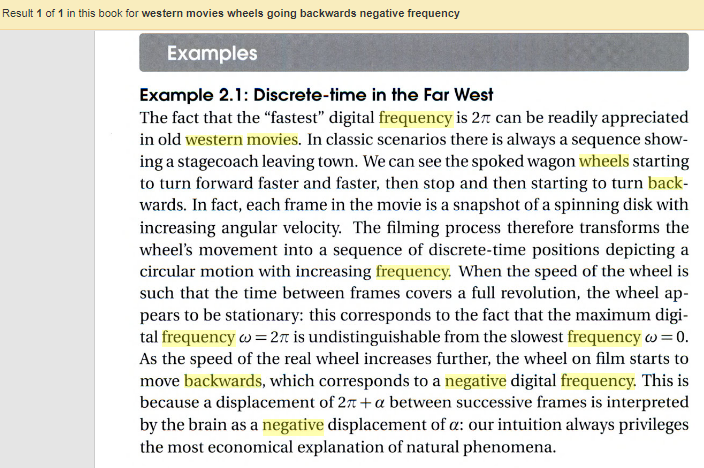Trigonometric functions with negative coefficients for angle
Dear experts,
I am learning the graphing of trigonometric function on my notes (not using any calculator).
I have come across the following format of the sin function
y= A.Sin(bx-c)+D
I am trying to see if there could be a trigonometry function like y= A.Sin(-bx-c)+D
That is the number of cycles being negative (-b instead of +b).
Kindly help me with a source which gives such complex problems and also provides solution. Since my practice till now has been on sin trigonometry function, I would like to see a few examples on sin function.
Kindly help.
Thank you
I am learning the graphing of trigonometric function on my notes (not using any calculator).
I have come across the following format of the sin function
y= A.Sin(bx-c)+D
I am trying to see if there could be a trigonometry function like y= A.Sin(-bx-c)+D
That is the number of cycles being negative (-b instead of +b).
Kindly help me with a source which gives such complex problems and also provides solution. Since my practice till now has been on sin trigonometry function, I would like to see a few examples on sin function.
Kindly help.
Thank you
ASKER CERTIFIED SOLUTION
membership
This solution is only available to members.
To access this solution, you must be a member of Experts Exchange.
I thought you might enjoy reading more about negative digital frequencies.
https://books.google.com/books?id=tKUYSrBM4gYC&pg=PA33&lpg=PA33&dq=western+movies+wheels+going+backwards+negative+frequency&source=bl&ots=B5HkT6h4p-&sig=baWl-PiyZonQAwsjqV3DtlDZiIY&hl=en&sa=X&ved=0ahUKEwizv-_1jpPaAhUU9GMKHdJUAg4Q6AEINzAB#v=onepage&q=western%20movies%20wheels%20going%20backwards%20negative%20frequency&f=false

https://books.google.com/books?id=tKUYSrBM4gYC&pg=PA33&lpg=PA33&dq=western+movies+wheels+going+backwards+negative+frequency&source=bl&ots=B5HkT6h4p-&sig=baWl-PiyZonQAwsjqV3DtlDZiIY&hl=en&sa=X&ved=0ahUKEwizv-_1jpPaAhUU9GMKHdJUAg4Q6AEINzAB#v=onepage&q=western%20movies%20wheels%20going%20backwards%20negative%20frequency&f=false
Here's an excerpt from a PDF file that you can download. I think the drawings on pages 2 and 3 may help you understand what digital negative frequency means.
At F = 12 Hz., the wheel turns halfway around at each frame, and the filmed image of it appears to oscillate back and forth with maximum rapidity (under these conditions). Why maximum? What larger motion could the spoke make on successive frames? If we set F even higher, say, to 18, then the wheel makes 3/4 of a complete revolution at each frame, but this is also indistinguishable from the wheel turning backwards at a rate of -6 Hz., equivalent to running the film in Fig. 2 in reverse. To make this clearer, consider the case of F = 23 Hz.http://www.ling.upenn.edu/courses/ling525/Moore1978Part2.pdf
At each frame, the wheel turns 23/24 of a revolution, almost all the way from where it starts. To verify that this will appear as a slow backwards motion (-1 Hertz), one only has to go to a western movie and watch carefully, taking into account the greater number of spokes on most wagon wheels. Finally, at F = 24 Hz., the wheel does not appear to move at all! Thus if we start at F = 0 Hz. and gradually increase the speed to F = 24 Hz., we see the wheel move slowly forward (counterclockwise, iLe., with small positive frequency), go faster to a
maximum at F = 12 Hz., then slow down while turning in the opposite direction (clockwise motion, negative frequency) and
stop completely at F = 24 Hz. If we further increase F from 24 to 48 Hz., we see again the same sequence of events. This is because all frequencies outside the range 0 to 12 Hz. are indistinguishable, except for being positive or negative, from frequencies between 0 and 12 Hz. according to the relationship ...
The responses provided do not pertain to chapters from High school Trigonometry
Not mentioned in the question - si how on earth are we meant to guess that?
>> My question is how does sin2theta, sin1/2thea, 3sin1/2theta works.
Ok, by all means, do ask it if you still have some concerns. And when you do ask it, please clarify what you mean by how it works. For example, I would not really understand a question that asked how y = a*x + b works. If the question were to ask, what are the min and max values for this y = a*x + b function in the range from -5 to +5, I'd have a good idea as to what the question is. So, please ask in another question about your new question with a little more clarity to keep our answers to the point. Thank you.
Paul
Ok, by all means, do ask it if you still have some concerns. And when you do ask it, please clarify what you mean by how it works. For example, I would not really understand a question that asked how y = a*x + b works. If the question were to ask, what are the min and max values for this y = a*x + b function in the range from -5 to +5, I'd have a good idea as to what the question is. So, please ask in another question about your new question with a little more clarity to keep our answers to the point. Thank you.
Paul
This negative frequency arises because the sampling rate is about 30 frames per second which doesn't capture the true motion of the wheel. If the sampling rate was a lot higher, then the wheel would appear to have the correct positive frequency.
If you have a strobe light, and spin an object clockwise, then by adjusting the strobe, you can make the spinning object look like it is spinning in the opposite direction, or even not spinning at all (i.e., neither positive nor negative frequency - but zero frequency).